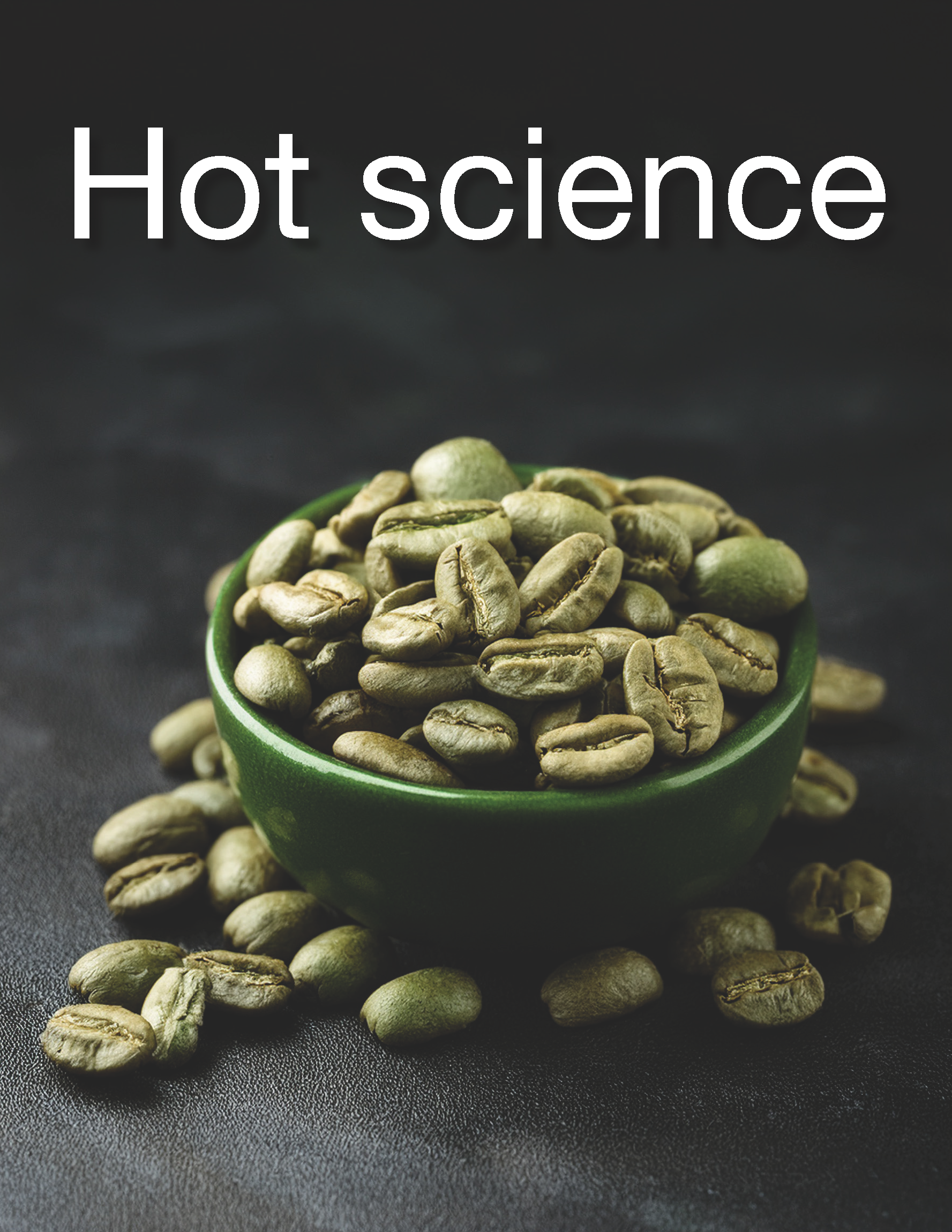Los poderes del café verde: Los ácidos clorogénicos del café verde y sus efectos para la salud
Palabras clave:
Café verde, ácidos clorogénicos, salud metabólica, antioxidante.Resumen
El café verde, grano sin tostar del café, ha ganado popularidad por su alto contenido de ácidos clorogénicos (ACG), principales responsables de sus propiedades benéficas para la salud. Durante el proceso de tostado, parte de estos son degradados, por lo que el café verde ha despertado interés en investigaciones enfocadas en sus efectos positivos sobre la salud metabólica y cardiovascular. Esta tendencia hacia productos funcionales convierte al café verde en una opción atractiva para los consumidores. Además, gracias a sus condiciones climáticas ideales para su cultivo, México tiene un papel importante en este mercado en ascenso.
Citas
Fortune Business Insights. (2025). Green Coffee Market Size, Share, and Industry Analysis by Type (Arabica and Robusta), End Product (Roasted Coffee, Instant/Soluble Coffee, and Green Coffee Extract), and Regional Forecasts, 2024–2032. Fortune Business Insights. Recuperado de https://www.fortunebusinessinsights.com/es/green-coffee-market-106635
Awwad, S., Issa, R., Alnsour, L., Albals, D., & Al-Momani, I. (2021). Quantification of Caffeine and Chlorogenic Acid in Green and Roasted Coffee Samples Using HPLC-DAD and Evaluation of the Effect of Degree of Roasting on Their Levels. Molecules (Basel, Switzerland), 26(24), 7502. https://doi.org/10.3390/molecules26247502
Farah, A., & Lima, J. (2019). Consumption of Chlorogenic Acids through Coffee and Health Implications. Beverages. https://doi.org/10.3390/BEVERAGES5010011
Lu, H., Tian, Z., Cui, Y., Liu, Z., & , X. (2020). Chlorogenic acid: A comprehensive review of dietary sources, processing effects, bioavailability, beneficial properties, mechanisms of action, and future directions. Comprehensive reviews in food science and food safety, 19 6, 3130-3158. https://doi.org/10.1111/1541-4337.12620
Maleki, S., Crespo, J., & Cabanillas, B. (2019). Anti-inflammatory effects of flavonoids. Food chemistry, 299, 125124. https://doi.org/10.1016/j.foodchem.2019.125124
Affonso, R.C.L., Voytena, A.P.L., Fanan, S., Pitz, H., Coelho, D.S., Horstmann, A.L., Pereira, A., Uarrota, V.G., Hillmann, M.C., Varela, L.A.C. (2016). Phytochemical composition, antioxidant activity, and the effect of the aqueous extract of coffee (Coffea arabica L.) bean residual press cake on the skin wound healing. Oxid. Med. Cell. Longev. https://doi.org/10.1155/2016/1923754
Agunloye, O., Oboh, G., Ademiluyi, A., Ademosun, A., Akindahunsi, A., Oyagbemi, A., Omobowale, T., Ajibade, T., & Adedapo, A. (2019). Cardio-protective and antioxidant properties of caffeic acid and chlorogenic acid: Mechanistic role of angiotensin converting enzyme, cholinesterase and arginase activities in cyclosporine induced hypertensive rats. Biomedicine & pharmacotherapy = Biomedecine & pharmacotherapie. https://doi.org/10.1016/j.biopha.2018.10.044
Singh, A., Rana, H., Singh, V., Yadav, T., Varadwaj, P., & Pandey, A. (2021). Evaluation of antidiabetic activity of dietary phenolic compound chlorogenic acid in streptozotocin induced diabetic rats: Molecular docking, molecular dynamics, in silico toxicity, in vitro and in vivo studies. Computers in biology and medicine, 134, 104462. https://doi.org/10.1016/j.compbiomed.2021.104462
He, X., Zheng, S., Sheng, Y., Miao, T., Xu, J., Xu, W., Huang, K., & Zhao, C. (2020). Chlorogenic acid ameliorates obesity by preventing energy balance shift in high fat diet induced obese mice. Journal of the science of food and agriculture. https://doi.org/10.1002/jsfa.10675
Wang, L., Du, H., & Chen, P. (2020). Chlorogenic acid inhibits the proliferation of human lung cancer A549 cell lines by targeting annexin A2 in vitro and in vivo. Biomedicine & pharmacotherapy = Biomedecine & pharmacotherapie, 131, 110673. https://doi.org/10.1016/j.biopha.2020.110673.

Descargas
Publicado
Cómo citar
Número
Sección
Licencia
Derechos de autor 2025 Revista de divulgación científica iBIO

Esta obra está bajo una licencia internacional Creative Commons Atribución-NoComercial-SinDerivadas 4.0.
Se permite el autoarchivo o deposito de los trabajos en su versi´ón post-publicación (versión editorial) en cualquier repositorio personal, institucional o temático, redes sociales o científicas. Lo anterior aplica desde el momento de la publicación del artículo en cuestión en la página web de la Revista de divulgación científica iBIO.




